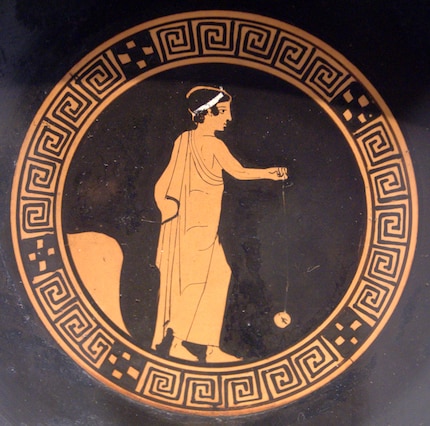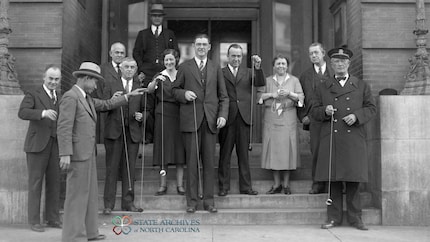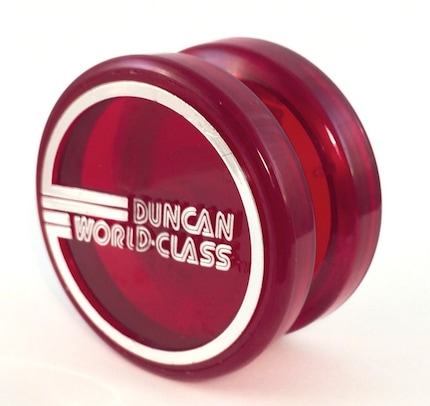

Remember yo-yos?
The toys of my childhood shaped, fascinated and frustrated me. One of them was the yo-yo.
I’m a child of the 90s, one of the best decades to grow up in. Smartphones were an alien concept, my first computer was a Windows 95, and a games console only came on the scene after years of nagging my parents. Non-digital, physical toys were still trendy at that point. And if there’s one toy that’s linked inextricably to that era, it’s the yo-yo. It didn’t matter if they were made of wood, plastic or metal, you could buy them everywhere. My first yo-yo was a traditional one made of wood, but that started to get boring after a while.
Luckily for me, I was one day given a yo-yo that’d open the door to another world. It had a free-spinning axle, which meant the yo-yo could spin for longer when the string was extended. What was even better, though, were the red, flashing lights built into it. They made sure that every kid on the playground was running around with a yo-yo in no time. Battles quickly started, where we’d see which of us had the best tricks – the only problem being that we were seven years old and had no idea what we were doing. At that time, there was no YouTube where you could copy the big kids and improve your skills, so the hype gradually died down. I learned three or four tricks back then, which I could still do in my sleep to this day. But sadly, it wasn’t enough to take my yo-yo career to the next level.
Today, however, I’m asking myself where the hotly sought-after toy actually came from in the first place. Who invented it? And what happened to it?
Its origins remain unclear
The yo-yo’s origins are still contested. Some historians claim the yo-yo was created in China as far back as thousands of years before Christ. Though there are no official records of it, the yo-yo does bear some resemblance to the diabolo, which dates back to the same time and region. This suggests the toy might have originated in China.
The first historical document mentioning something similar to a yo-yo comes from Greece in 500 BC. It describes a ceramic disc, which is suspected to have been used for hanging curtains. However, a painting on a Greek vase shows a boy playing with a yo-yo, which could prove that these discs were used as toys.

According to historical records, hunters in the Philippines in the 16th century would hide in trees and hit animals below with a stone tied to a string. The weapon could be whipped up and down for multiple attacks on the prey. This means it’s likely that the yo-yo didn’t just make its way from China to Greece, but to the Philippines as well, where it was popular for a long time as a children’s toy.
In the 18th century, the toy found its way from the Orient to Europe, becoming particularly popular among the Scottish and French aristocracies, before reaching England and Germany. In a poem he penned in Venice in 1790, Goethe wrote: «What a fun game! The twist of the disc on the thread, fleeing the hand and leaping hurriedly back again.» In 1791, Johan Henric Kellgren, a Swedish proponent of the Enlightenment, called the yo-yo the «joujou de Normandie» in his poem «Dumboms leverne». Although it looks as if «joujou» birthed the term «yo-yo», it’s not confirmed by historical records. It was someone else who named the yo-yo officially.
Pedro Flores coined the word yo-yo
On 9 June 1928, Pedro Flores founded the Yo-Yo Manufacturing Company in Santa Barbara. Flores initially made his yo-yos by hand and sold them to children in the neighbourhood. Unlike previous versions, these hand-carved toys featured an important update. Rather than being tied to the axle, the string was wrapped around it, allowing the yo-yo to spin freely at the end of the thread.

Around 1930, businessman Donald F. Duncan bought Pedro Flores’ company, securing the rights to the «Yo-Yo» brand. At that time, other companies had to use names such as «return tops», «whirl-a-gigs» or «twirlers». In 1965, however, Duncan was embroiled in a legal battle over the word «Yo-Yo». Consequently, the court ruled that it had become an everyday term, meaning it could no longer be protected as a brand.
1980: a decade of innovations
For the yo-yo, the 80s were defined by innovations. Take Mike Caffey’s 1980 patent for a yo-yo with an automatic return mechanism. A year later, in 1981, Duncan released his «World Class Yo-Yo» whose axle had a special coating allowing it to spin for 20 per cent longer than its predecessors.

Source: yoyo.fandom.com
In 1984, the first yo-yo with ball bearings was produced by Svenska Kullagerfabriken (SKF) as part of an ad campaign, marking the beginning of a major change in yo-yo design. In the same year, Tom Kuhn launched the Silver Bullet – the first model with an aluminium-wrought body.
Then, in 1989, Yomega brought the Fireball to market. It was equipped with a metal axle housed by a plastic case, which meant it could spin for three times as long as a standard yo-yo with a fixed axle. In the 90s, it counted itself among the most popular yo-yos in the world.
The 90s: styles and contests
While the 80s brought the yo-yo itself on in leaps and bounds, the 90s saw the focus turn to styles of tricks. After the first World Yo-Yo Contest was held in 1992, the yo-yo world developed rapidly. More than 20 different styles emerged over the years, with five coming out on top. Even today, they’re still used at world championships.
Single A
«Single A» or «1A» is a style where you perform tricks with a single yo-yo. As it’s the most well-known style and the easiest to master, it’s almost always the first one people learn.
Double A
The «Double A» involves the use of two looping yo-yos in each hand. The AA game consists of varying series, including Loops, Hops, Moons, Punches and Stalls. It also involves different versions of Around the World and other circular yo-yo movements.
Triple A
«Triple A» is a blend of the above two styles. Like «Double A», it’s played with two yo-yos, while the tricks come from «Single A». It tends to involve string tricks, whereby the string plays a central role – one example being Velvet Rolls.
Offstring
In «Offstring» the string is tied to your finger instead of the yo-yo. This allows the yo-yo to be tossed into the air, making it look like a smaller version of the diabolo.
Freehand
«Freehand» is only played with one yo-yo. Rather than tying the string to your finger, however, you attach a counterweight – usually a casino dice or a small ball. This allows you to perform completely different tricks than with conventional models.
I’m seriously impressed by yo-yo players. You can tell they’ve been practising for decades, tirelessly perfecting their styles. I can do just a handful of tricks, including the Sleeper and the Around the World. I certainly won’t be winning any competitions with them. Perhaps if I’d shown more determination in the 90s, I’d be appearing in yo-yo videos today instead of writing about them. Or maybe I was just unlucky that yo-yos as cool as the one belonging to the world champion weren’t around when I was at school.

I get paid to play with toys all day.
Interesting facts about products, behind-the-scenes looks at manufacturers and deep-dives on interesting people.
Show all

